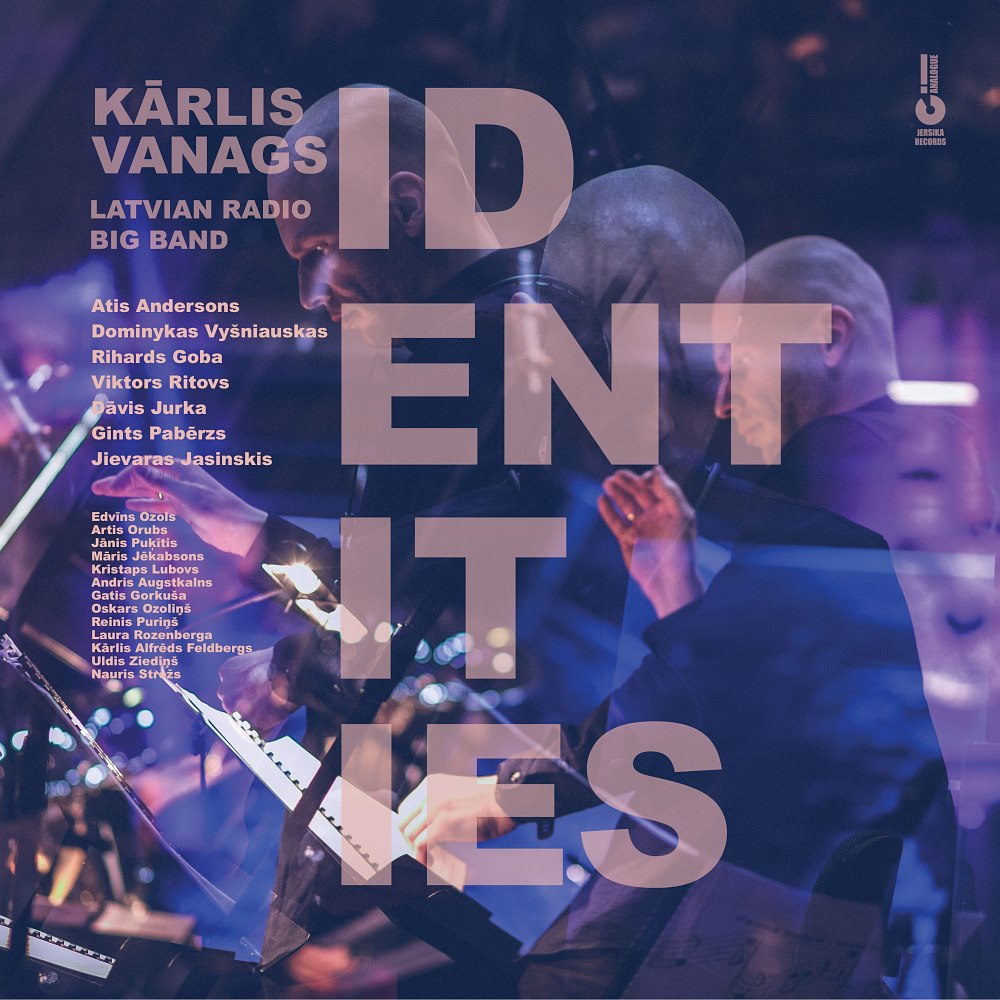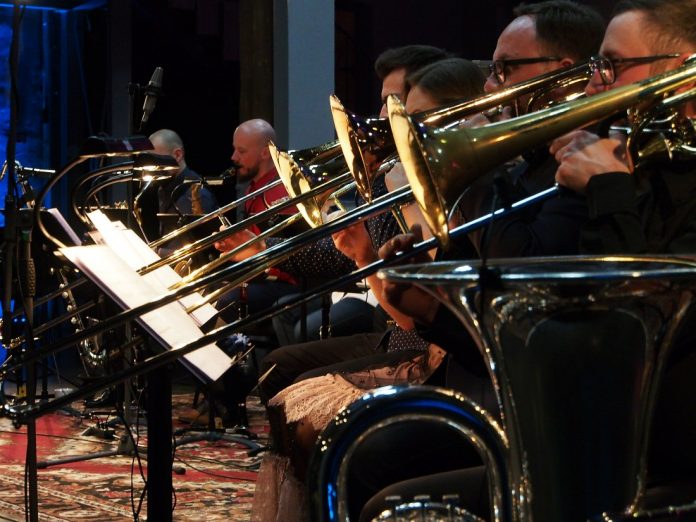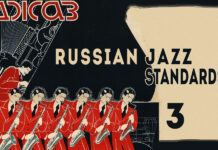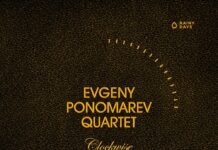Cyril Moshkow,
Jazz.Ru Magazine editor/publisher
A new album by the Latvian Radio Big Band (in Latvian: Latvijas Radio bigbends) is scheduled for release in May 2020. In late January, 2020, when international travel was still possible, Jazz.Ru Magazine’s mobile team documented a two-day recording session in Riga, the capital of Latvia, where the album material was laid on tape.
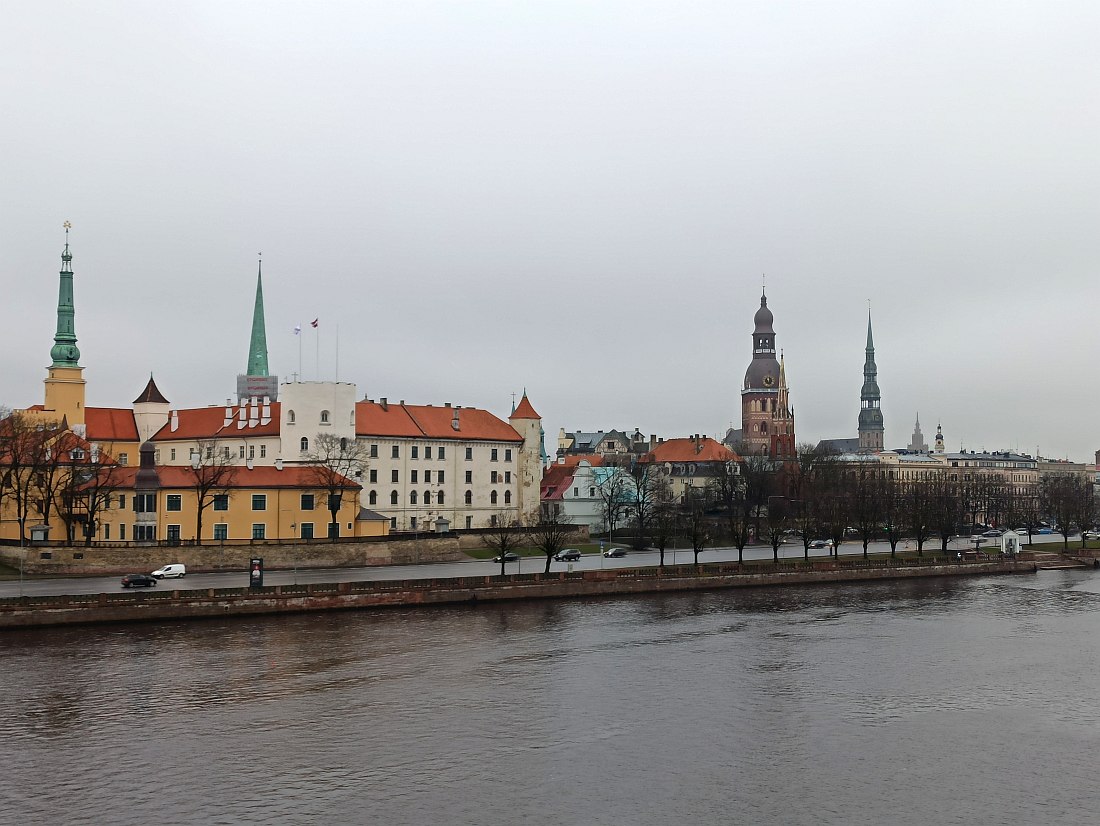
“Laid on tape” is quite literal here. The recording was made not at the Radio House studios, but at the small Spīķeri concert hall. Mareks Ameriks, the producer at Jersika Records, an up-and-coming Riga-based record label, and the bandleader Kārlis Vanags intended not to do it by the traditional method of multi-track recording with the subsequent mixing, but rather by a more vintage technology, for which Spīķeri was better suited. In connection with the recent revival of interest in analogue physical media of musical sound recordings, primarily vinyl records, recording with mixing “on the fly”, right in the process of analog sound recording on just two channels, i.e. the classic stereo format, has unexpectedly gained new relevance.
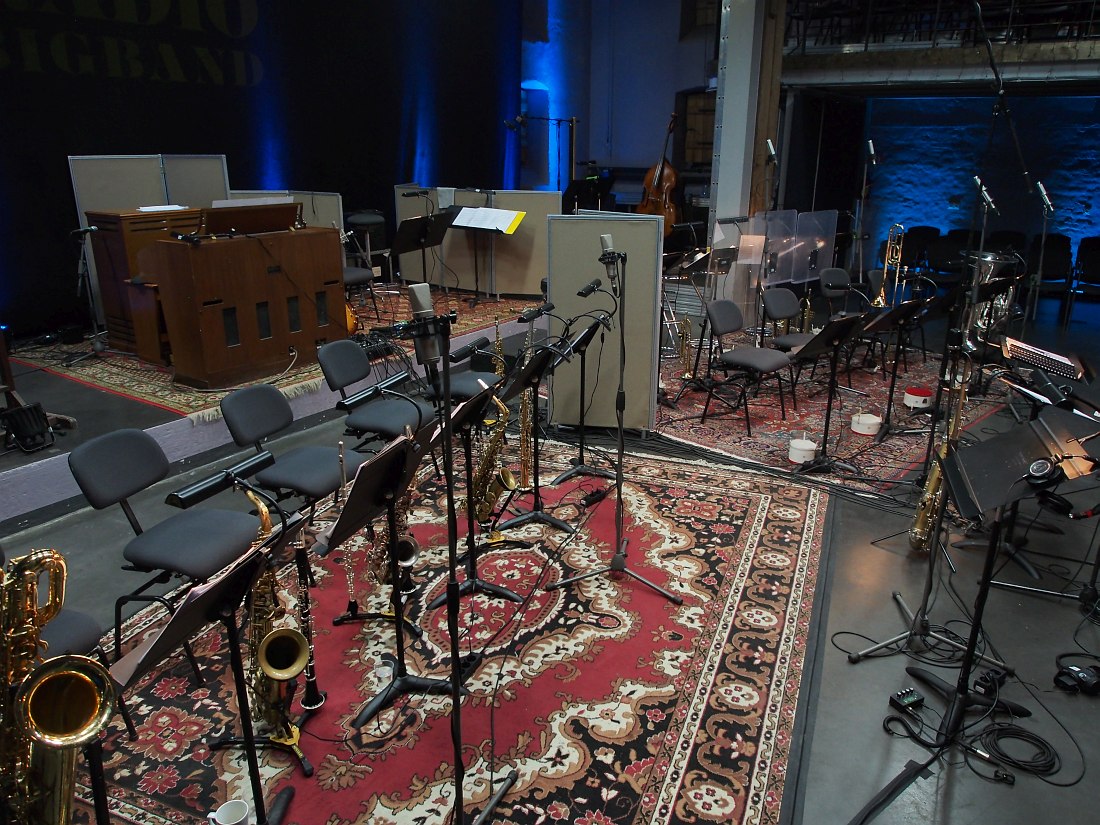
Of course, real-time analog stereo recording became by now a “boutique technique”; that is, a handcrafted, singular, one-of-a-kind production, and by no means simple. From the convenience point of view, the possibilities of correcting and expanding the sound of individual instruments and groups of the band, as well as the overall sound quality provided by multi-channel recording with subsequent mixing is difficult to surpass nowadays. Real-time analog two-track recording can be considered a kind of “aerobatics” of the sound engineer craft, the craft where the reference masterpieces were created 60 years ago if not earlier.
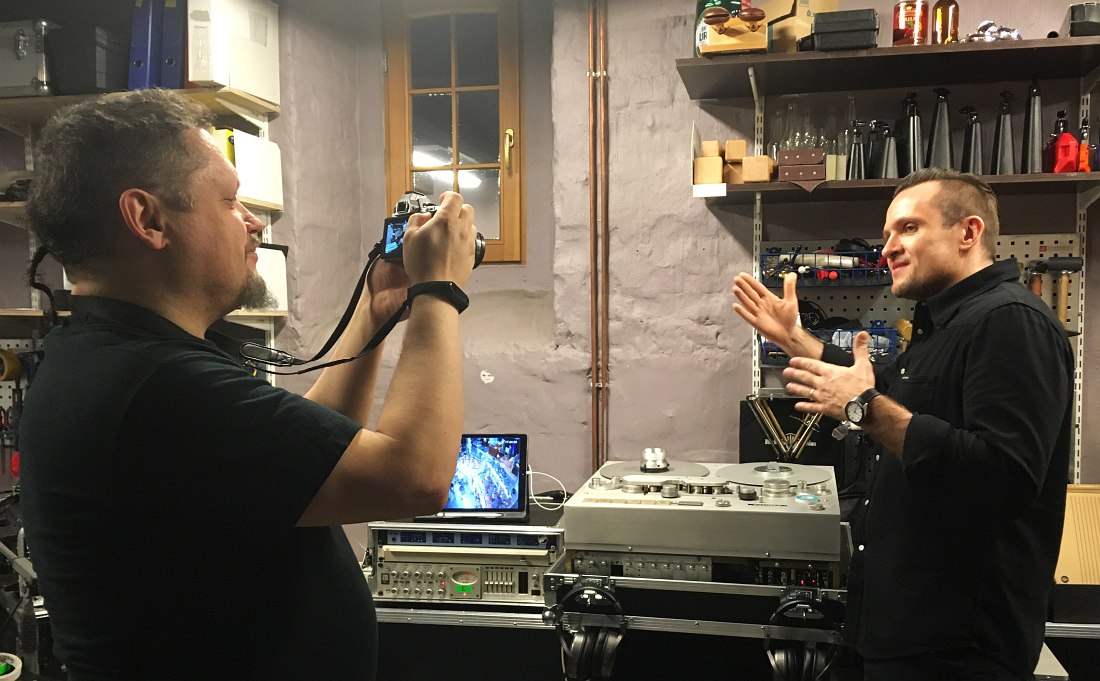
It was not the first time when Marek Ameriks was working in this format. In fact, most of the albums he produced on the Jersika Records label since its inception in 2017 were recorded using the direct analog two-track technology, which, as Marek was sure, was best suited for the albums intended for release on vinyl. Until 2020, the label worked with small groups. Their catalog contained, for example, a double vinyl record of spontaneous improvisations recorded in Riga by a trio which included the veteran of the Soviet jazz avant-garde, pianist Slava Ganelin (who lived in Israel for the last three decades,) as well as the Vilnius-based percussionist Arkady Gotesman and Riga-based saxophonist, Deniss Paškevičs (“Variations,” 2019). He also released the experiments in the field of fusion and modern electronic sounds by young Latvian musicians, such as “Sequences and Consequences” by Lupa, where the sophisticated alto saxophone played by Dāvis Jurka stood out, the leader of the saxophone section in the Latvian Radio Big Band and one of the first graduates from the BA program in jazz performance at the Latvian Academy of Music.
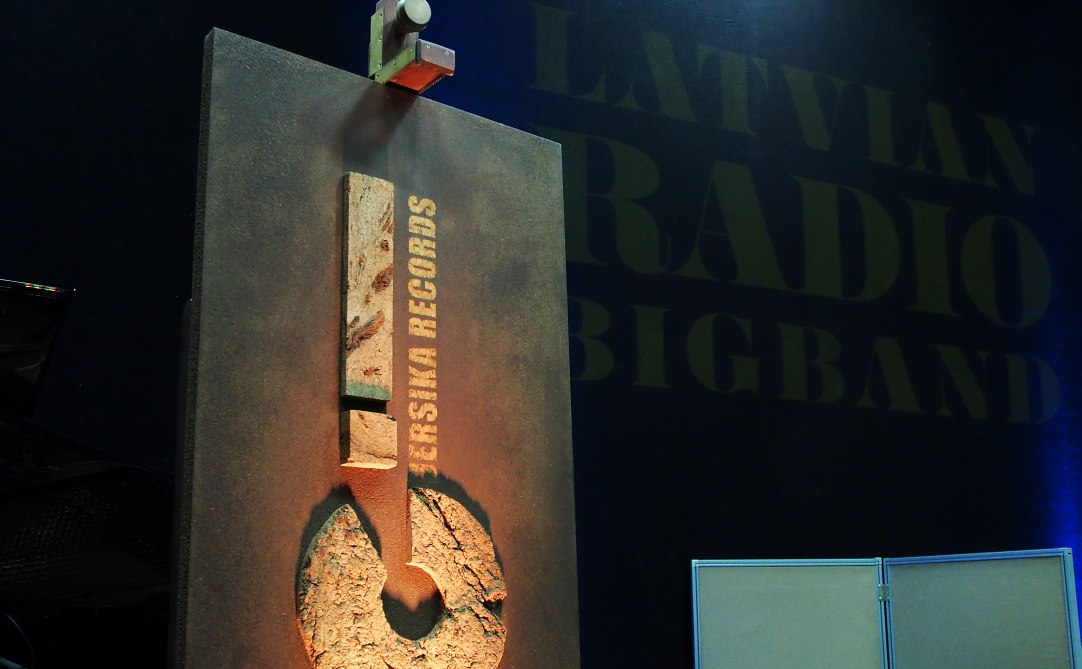
The Latvian Radio Orchestra was well known to music lovers in the former USSR: the first record of a band named the Latvian Radio Light Music Orchestra was released by the All-Union Recording Studio in 1962, when the orchestra was led by the composer Egil Schwartz (Egils Švarcs). For many decades, the radio orchestra remained the main employer in the Baltic republic in the field of pop and jazz performance. In 1966-68, the Latvian Radio and Television Variety Orchestra was led by composer Ringolds Ore, and after his untimely death, saxophonist Alnis Zaķis stood at the helm of the orchestra, who led the band until 1991. In 1978-82, the orchestra was often conducted by Latvia’s most popular composer, Raimonds Pauls, who at that time directed the entire musical broadcasting and recording division at the Latvian SSR State Radio and Television.
In the early years of independence, the big band was led by the trumpeter, composer and arranger, Gunars Rosenbergs, and in 1994-95, the band was again led by Raimonds Pauls, this time as artistic director and conductor, who at the time also was the Latvian President’s Culture Advisor.
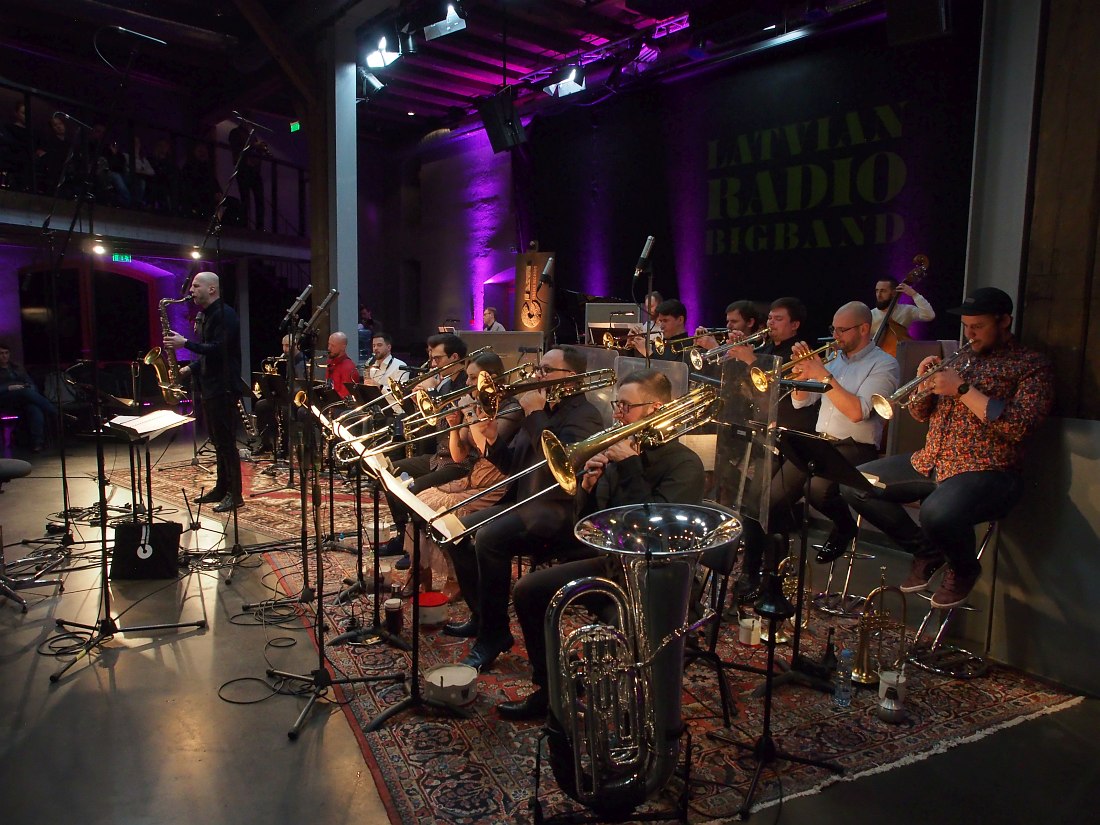
In 1996, the orchestra in its former form ceased to exist, like many other government-supported cultural entities in Latvia. It wasn’t before the new century’s second decade when its revival began. Since 2012, the band has been working on a project basis under the wing of the state-owned concert agency Latvijas Koncerti. The main force behind the revival of the orchestra was its former drummer (1975-1996,) who during the years of independence was the head of the recording service at the Latvian Radio and the producer of the Rigas Ritmi festival, Maris Briežkalns, who continued to work closely with the orchestra until 2019. Currently, the artistic director of the Latvian Radio Big Band is tenor saxophonist Kārlis Vanags. Under his baton, the band worked with an array of distinguished soloists, such as vocalists Roberta Gambarini and Kurt Elling, American trumpeter Randy Brecker, Norwegian saxophonist Marius Neset, Swedish trombone player Nils Landgren, and even the Maestro himself, the former leader of this big band, Latvian pop music veteran Raimonds Pauls, as well as the Australian multi-instrumentalist, James Morrison. In 2012, Morrison performed with the Riga orchestra, and four years later he came again to present at the Rigas Ritmi festival the album “Mare Balticum” (Latin for “Baltic Sea”,) recorded with Latvian Radio Big Band. The album consisted of his arrangements of Latvian folk songs.
The orchestra’s music library has a lot of music reflecting its heritage, including excellent arrangements by the late titans of the Riga big band arrangement school, Gunars Rosenbergs and Vitaly Dolgov. But for the current recording in analog stereo the band prepared a completely different, original program. Let’s have a word to two from the originators of the idea.
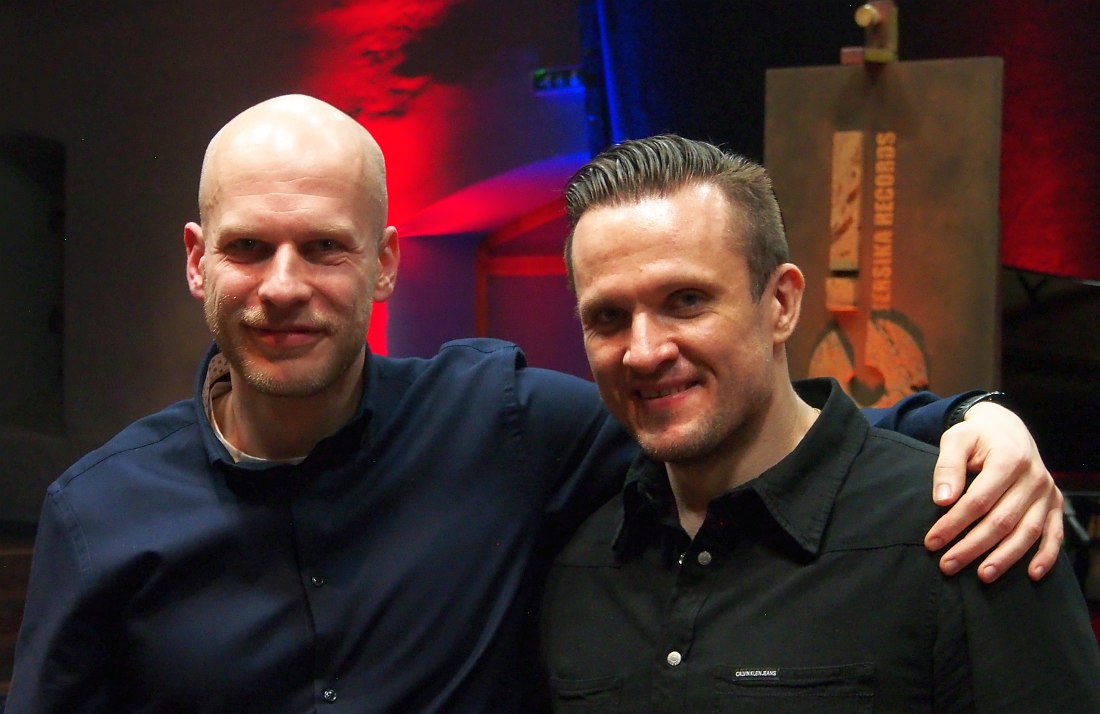
Producer Mareks Ameriks:
“Big band record is something that I think any jazz label would be proud to have in its catalog. The idea of a big band recording came to me as soon as the first recordings were released by Yersika Records. While working on each next album, I became acquainted with more and more musicians, as each next project led to another. A year ago, I finally met Kārlis Vanags, who was already in the process of compositing and arranging for a possible big band recording, and we started pondering on this project. Generally we can say that the preparations took a whole year. So right now we are in the middle of the two recording sessions for this project: analog stereo recording on a Studer A 80 machine, on quarter-inch wide tape.”
Bandlider and composer Kārlis Vanags
The graduate of the Jāzeps Vītols Latvian Academy of Music and the Sibelius Academy in Finland became the leader of the Radio Big Band at the age of 28, by which time he already had five years of experience in leading a large jazz band: he organized his first orchestra, the City Jazz Big Band, in 2007. In addition to working with the LRBB, Karlis plays with his own trio, and from time to time performs as a guest saxophonist with the legendary Latvian electronica band, Zodiac. The current project is not the first recording of his original compositions for jazz orchestra: the Latvian Radio Big Band has already recorded a whole CD with his music, “Latvian Jazz Suite” (Latvijas Koncerti, 2016).
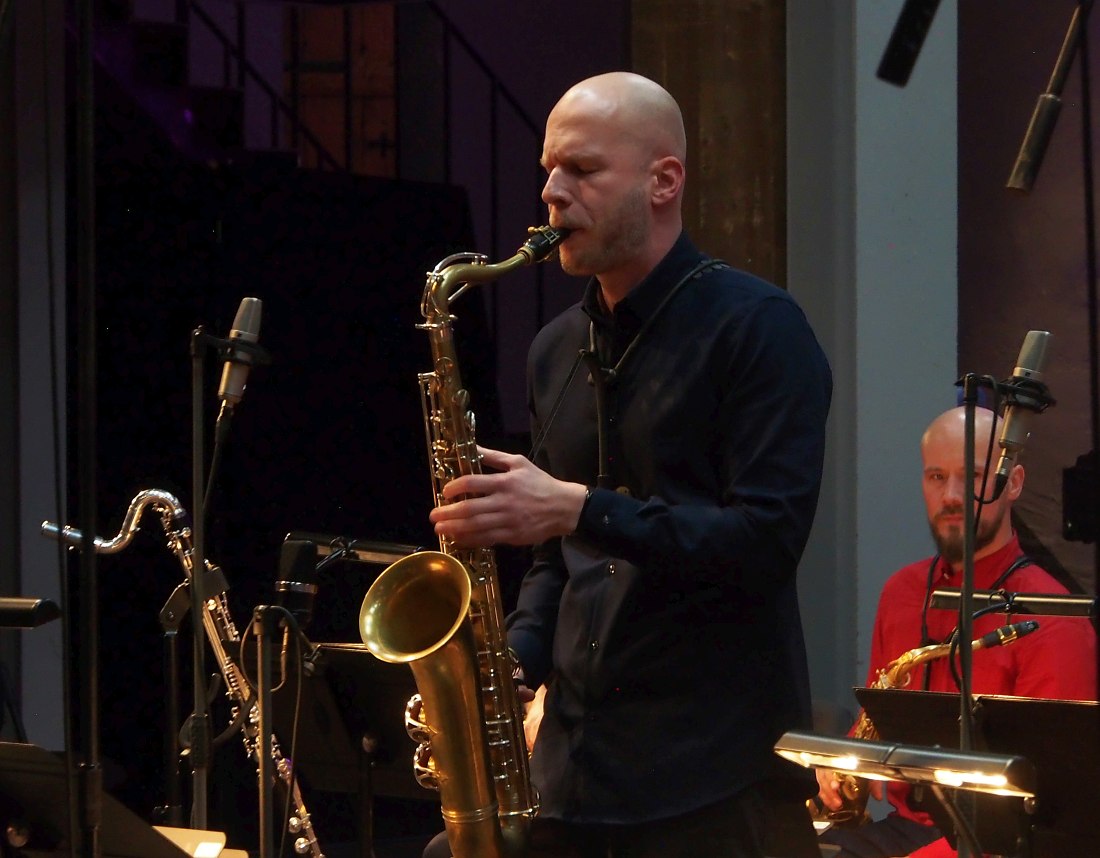
Let’s start with a description of the project. How was it conceived?
I began to ponder on the idea of this record about two or three years ago. I came up with an original program for the big band, developing ideas that should have been embodied in this music. And then I met the producer and head of the Jersika Records record company, and he suggested to me: maybe we will record your music, but in a special way in analog format? We will record music on a two-track tape recorder, alive, in the presence of the public, and we will reduce it “on the fly”.
Is the entire material for this record original?
Yes, I composed and arranged all pieces. The title of the album is “Identities,” and each track describes a certain human feeling or condition—certain qualities that together may constitute a personality, but at the same time a collective and even national “identity”.
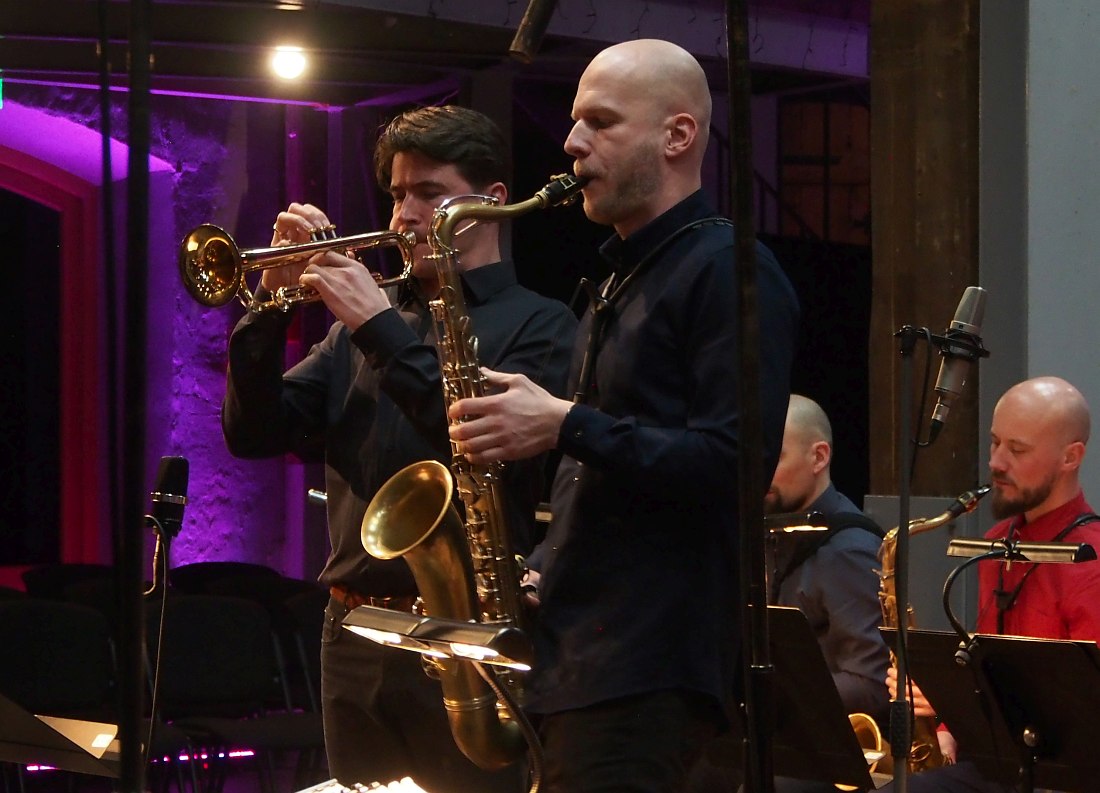
How did you pick the soloists for each track?
It is a great pleasure to work with this orchestra. I know well how each of the members of the orchestra plays, what are their strong sides. I wanted to achieve a certain sound for each track. For example, our orchestra usually does not include a Hammond organ, but for this record we invited a wonderful soloist who plays this instrument, Atis Andersons. Other soloists are band members: trumpeter Dominykas Vyšniauskas, or my favorite saxophonist Gints Pabērzs, who played solo on the soprano saxophone, guitarist Rihards Goba, pianist Viktors Ritovs. Another solo was played by our guest from Lithuania, a wonderful trombonist (as well as a composer and arranger,) Jievaras Jasinskis from Vilnius.
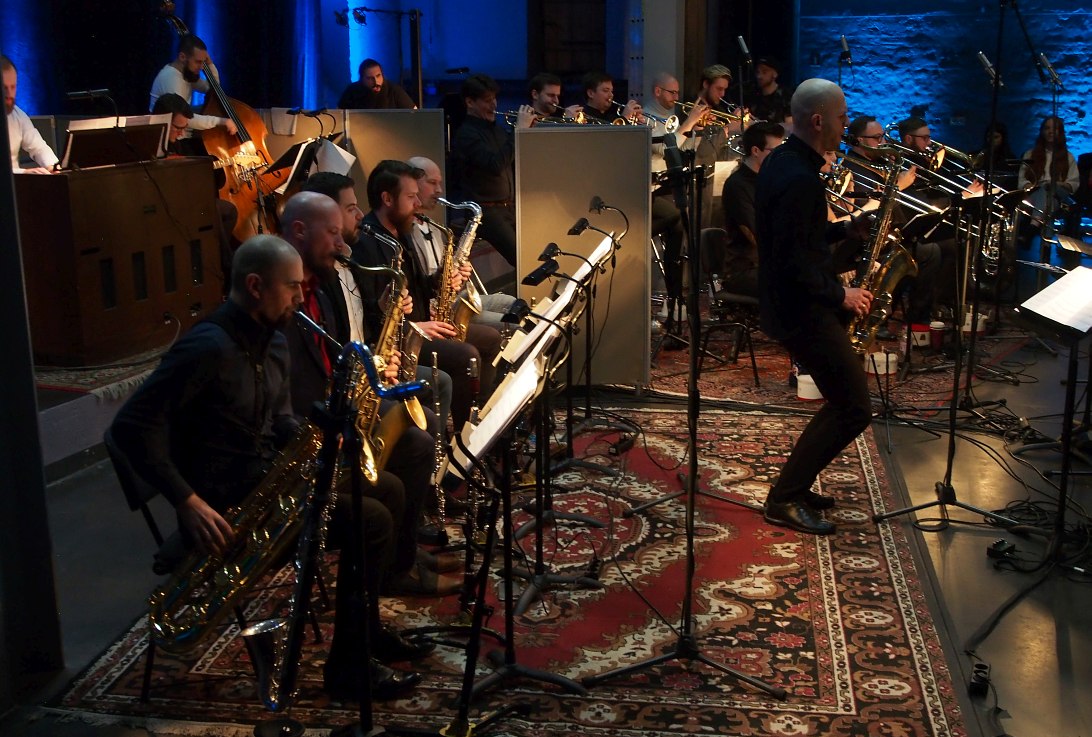
The material of the album was performed at the Spīķeri Hall twice, one complete set of tracks a day, both times in the presence of the audience, who were politely asked not to applaud after the solos. The listeners were also required to wait several seconds after each piece, until the orchestra conductor would receive a signal from the control room which confirmed that the recording of the track was finished, and nod to the public, who then was free to express their emotions. On the one hand, this made possible an actual studio environment for the massive, timbrally bright sound of the big band. At the same time, due to the small size of the hall and to its many, multidirectional reflective surfaces, this sound was not at all booming, not cavernous, as could be the case in some large studios. Due to no applause and other audience noises, an aural environment with brisk, well-detailed sound was obtained. It should be noted that not only a sound recording technology that is unique for modern times was used, but also a unique Latvian-made microphone park created by Blue Microphones (the first word is short for Baltic Latvian Universal Electronics).
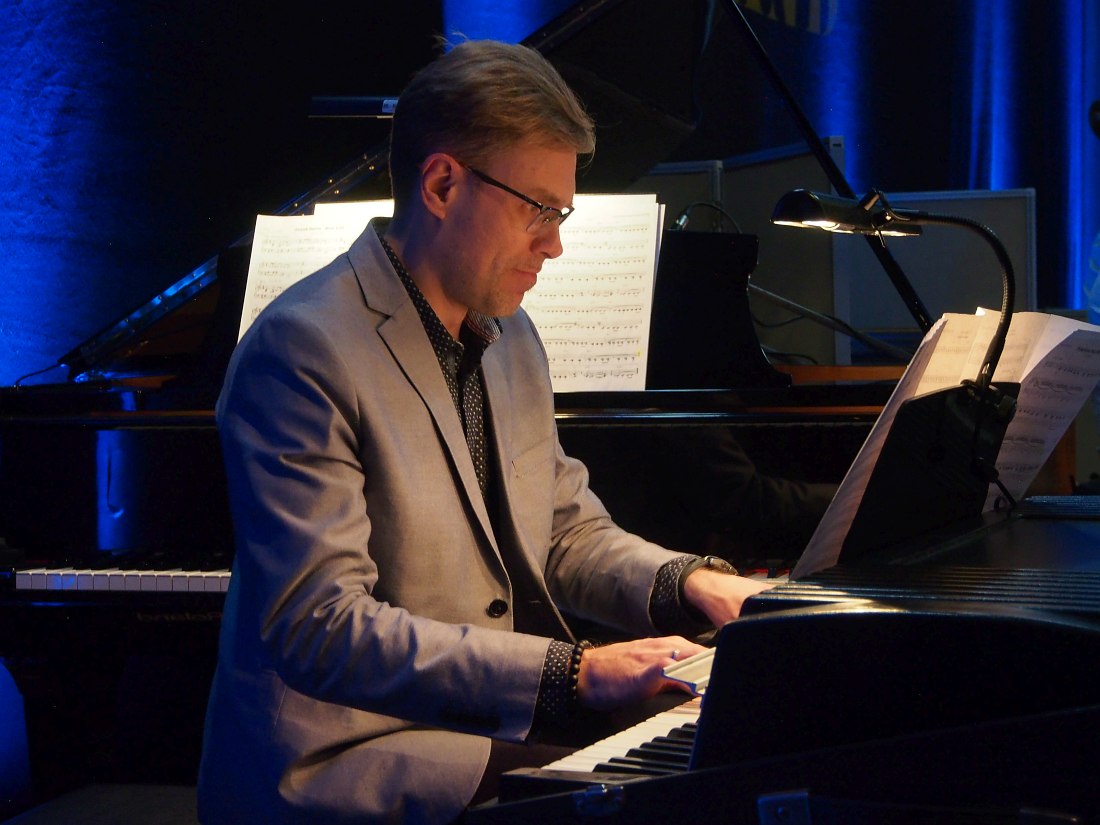
On the other hand, the very presence of the audience, their glances, their instinctive body language reaction to the music, albeit not expressed by clapping and whistling, was inspiring and disciplining the musicians, allowing the band to feel the familiar atmosphere of the concert, however restricted. The first day was rehearsal, although the tape was running: it can be called a complete dress rehearsal of sound and performance. Each day each piece was performed only once, there was no editing or overdubbing of additional parts: the idea was precisely to accurately record the live performance of the band on analog two-tracks. And this mission was accomplished.
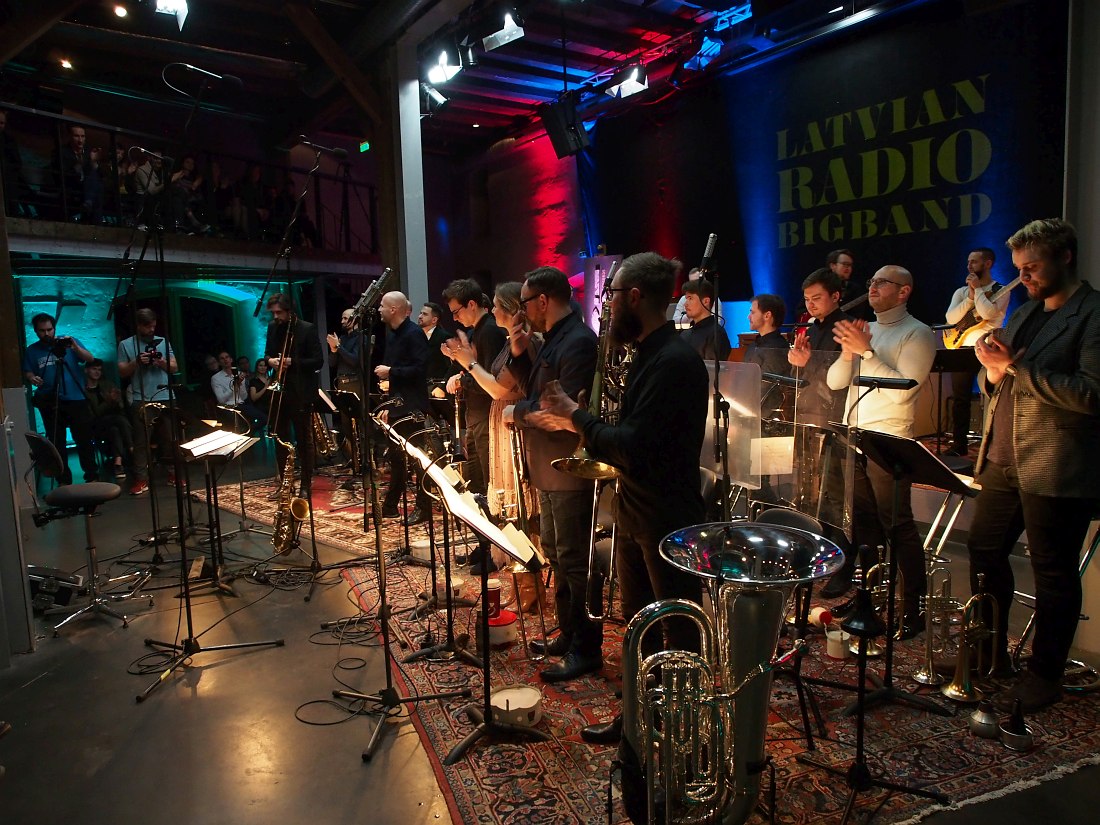
In a small documentary story shot by the Jazz.Ru mobile group (author Cyril Moshkow, assistant Natalia Kravchenko) during the recording sessions, we used fragments of two original compositions by Kārlis Vanags, “Priorities” and “Challenges,” as well as the entire performance of “Hopes and Dreams,” the final track of side A on the vinyl album. The track features solos by pianist Viktors Ritovs and alto saxophonist Dāvis Jurka, whom we mentioned above as a featured performer on one of the earlier releases on Jersika Records and leader of the saxophone section of the Latvian Radio Big Band. In addition, you can watch both interviews that you have already read above: enable English subtitles on YouTube (Cyril Moshkow and Mareks Ameriks speak Russian in the video).
VIDEO: Jazz.Ru Magazine documentary (15 minutes)
httpv://www.youtube.com/watch?v=VNfiAWl-ELo
Also featured in the video is the work of one of the most important participants of this recording, the one who does not make a sound, but enables us to hear the entire sound picture through his aural imagination and recording techniques experience: the sound engineer Gustavs Ērenpreiss.
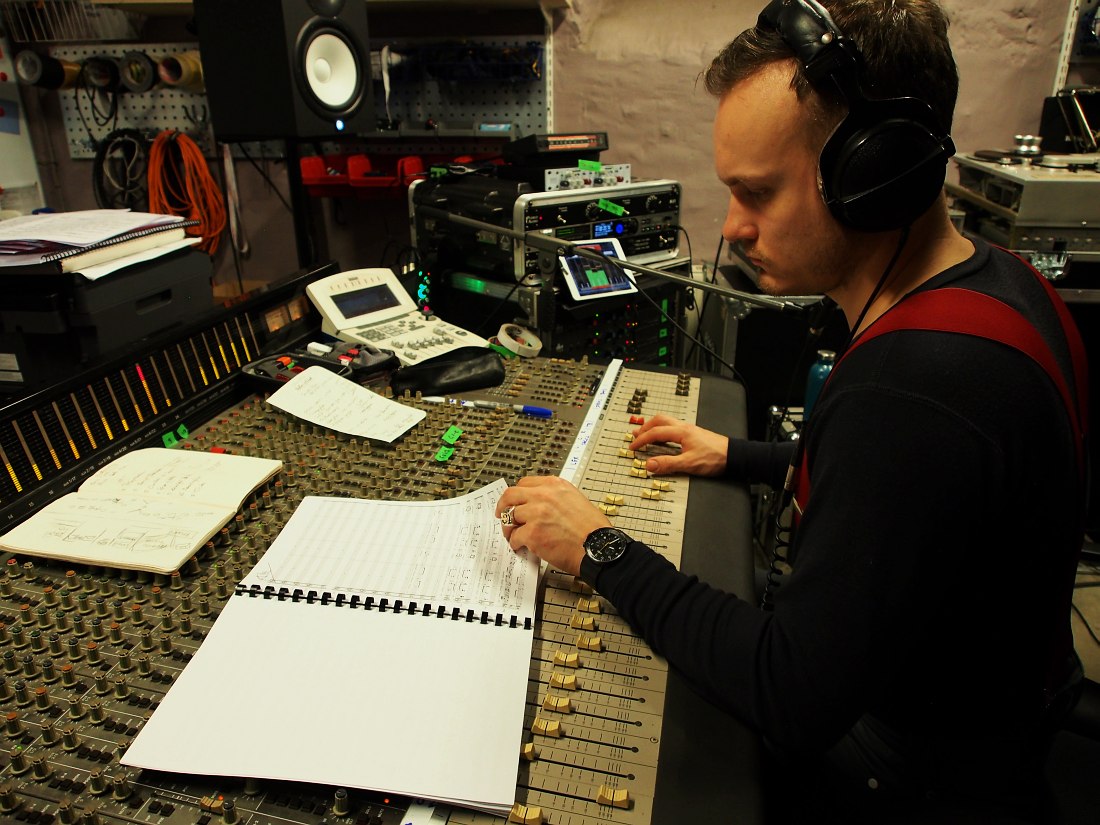
He worked on other Jersika Records releases, but it must be noted that, despite his relatively young age, he has extensive experience in recording not only “popular” genres, but also classical music. This graduate of the Royal Danish Conservatory in Copenhagen worked for a number of European music companies on the recordings of music by such aesthetically dissimilar composers as, say, the leading classical avant-garde composer of Denmark, Per Nørgård, or Pyotr Ilyich Tchaikovsky, whose Piano Trio in A minor, op. 50, “In Memory of a Great Artist”, Gustav recorded as performed by the Trio con Brio Copenhagen for the London-based label, Orchid Classics. The experience of a classical sound engineer is well visible in our video: it is clear that Ērenpreiss works not only by ear, but also, like any good sound engineer in «serious» music, by the orchestral score.
Gustav was assisted by Balvis Trinkuns, who operated the studio tape recorder, and sound engineer Kaspars Putriņš, who later also mastered the album at LokoMotiv Room, the base for the recording company Jersika Records.
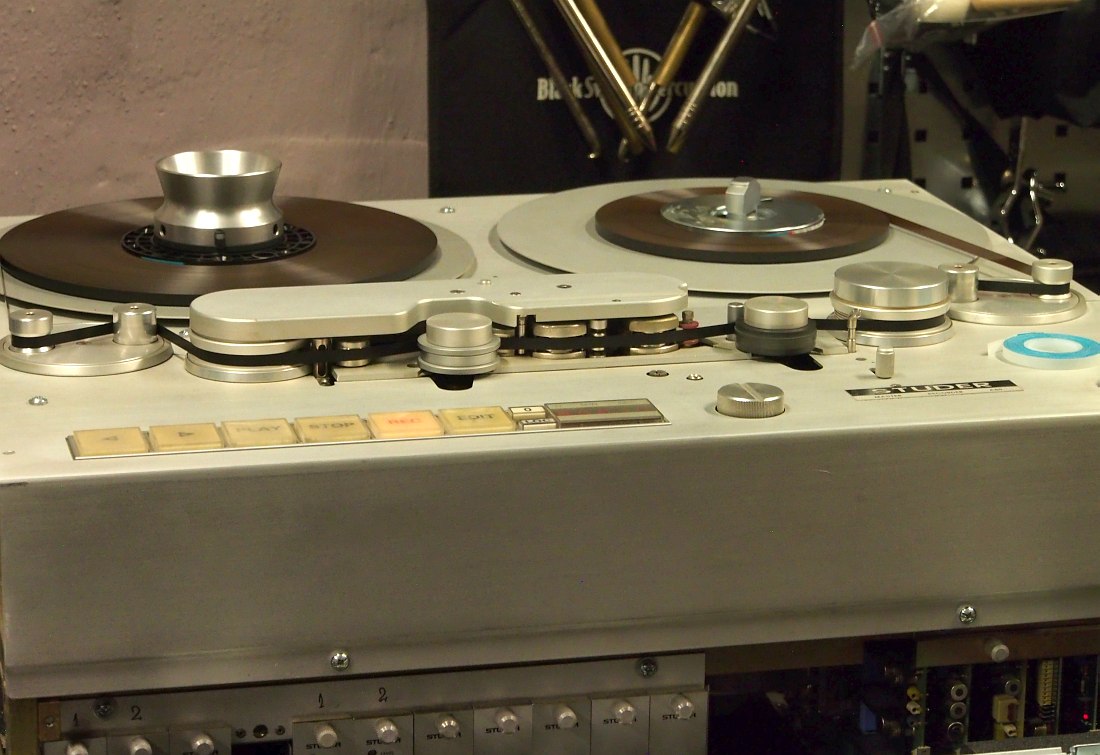
This reporter must note that even compared to 2016, when I first heard the band live at the Rigas Ritmi festival, their performance class definitely further improved: the sections sound more even and more distinct, while the band as a whole is now sounding dynamically diverse. It breathes, as they say, while the rhythm section (drummer Artis Orubs, bassist Edvins Ozols, guitarist Rihards Goba and pianist Viktors Ritovs) gained an enviable rhythmic mobility and resilience.
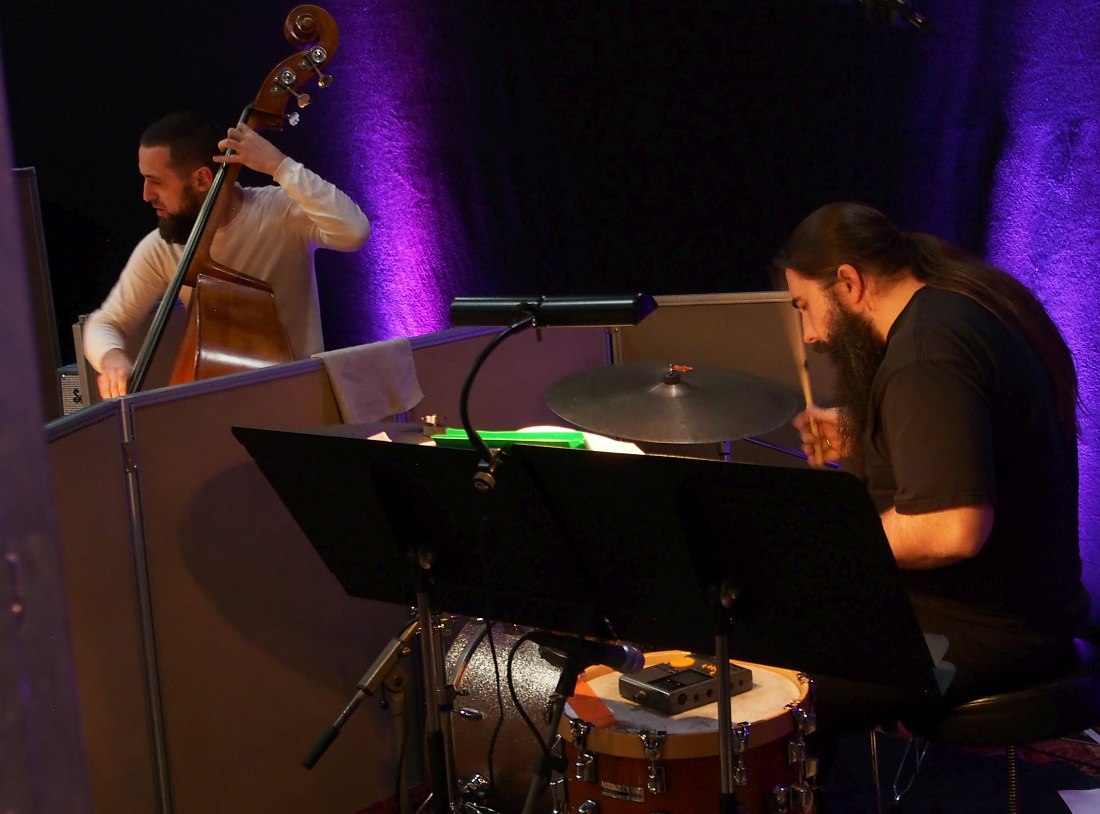
As a whole, the composer, the band, and the label produced a large and serious work, at the same time quite accessible for a fairly wide audience. This is modern big band jazz, completely within the framework of the jazz paradigm, one might even say completely within modern jazz mainstream vein.
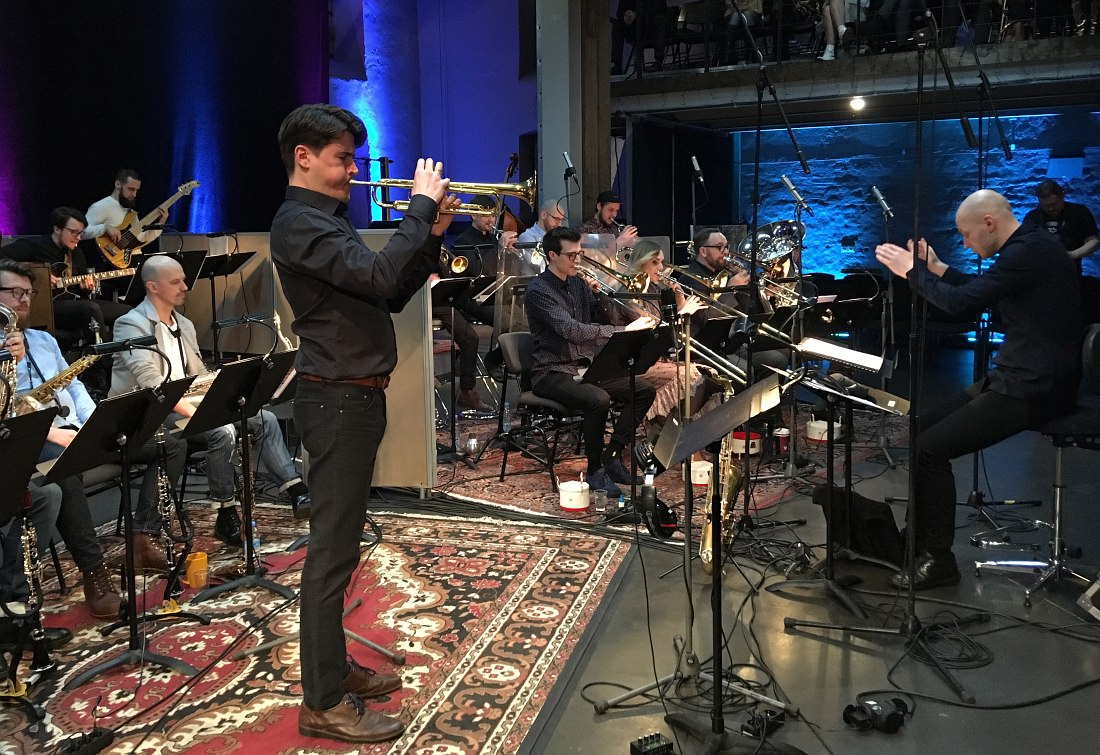
The soloists of the orchestra must also be mentioned, among which, next to the orchestra leader Kārlis Vanags, I will single out the trumpet player Dominic Vyšniauskas, a Lithuanian musician living in Riga, the son of the outstanding Lithuanian saxophonist improviser Petras Vyšniauskas (and, by the way, the 1st prize winner at the 9th International competition of young jazz performers in Rostov-on-Don, 2013). Besides Kārlis Vanags, who played solo on two of seven tracks, two other saxophonists should be mentioned: altoist Dāvis Jurka and sopranist Gints Pabērzs; guitarist Richard Goba played a stylish solo in one track, and the album also featured two special guests: Riga-based organist Atis Andersons, a graduate of the Latvian Academy of Music and the Amsterdam Conservatory, and trombonist from Lithuania, Jievaras Jasinskis.
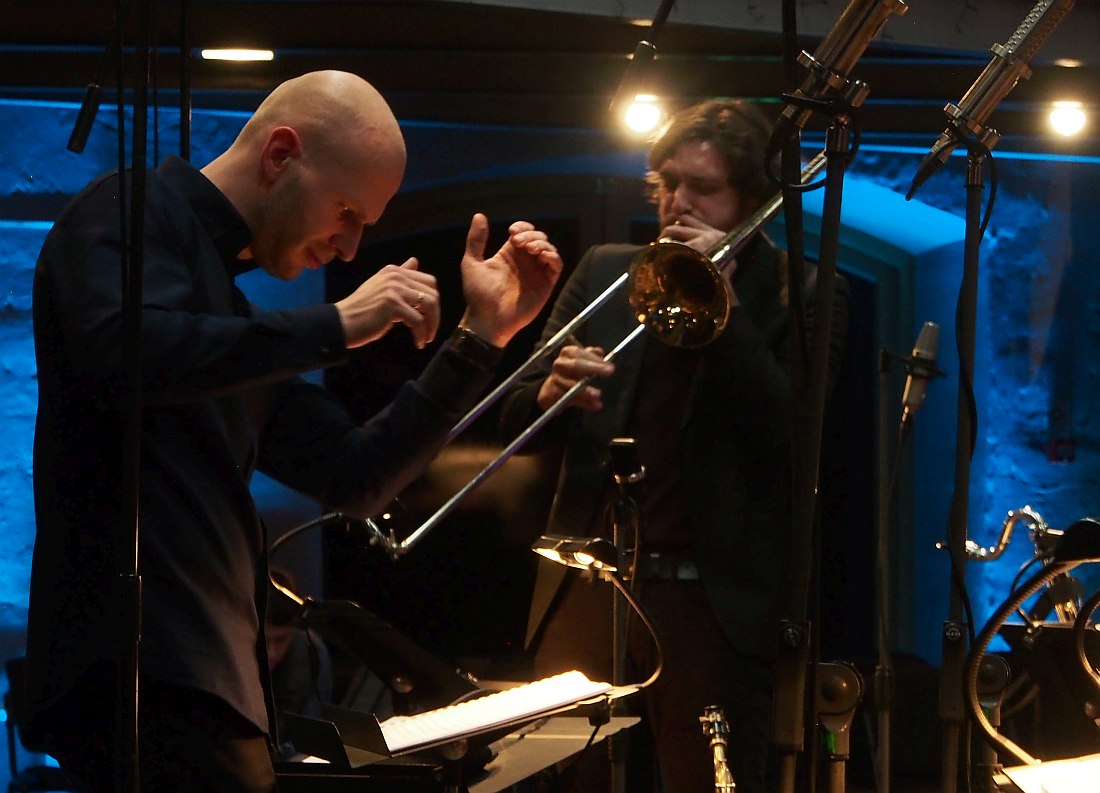
The album was compiled and prepared for release as early as March, since its premiere was intended for the pan-European jazz exhibition and trade fair, Jazzahead! in Bremen (Germany) in late April. However, because of the ubiquitous pandemic, this largest jazz industry forum in the world was canceled, or rather postponed until 2021. Now the album release date is set for May 22, 2020. The album is available for pre-order on the Jersika Records Bandcamp page, both as downloadable digital files and as a vinyl record; one of the tracks, “Self Esteem,” which opens the record, can already be streamed from this page. The link to the page will open by clicking on the album cover.
